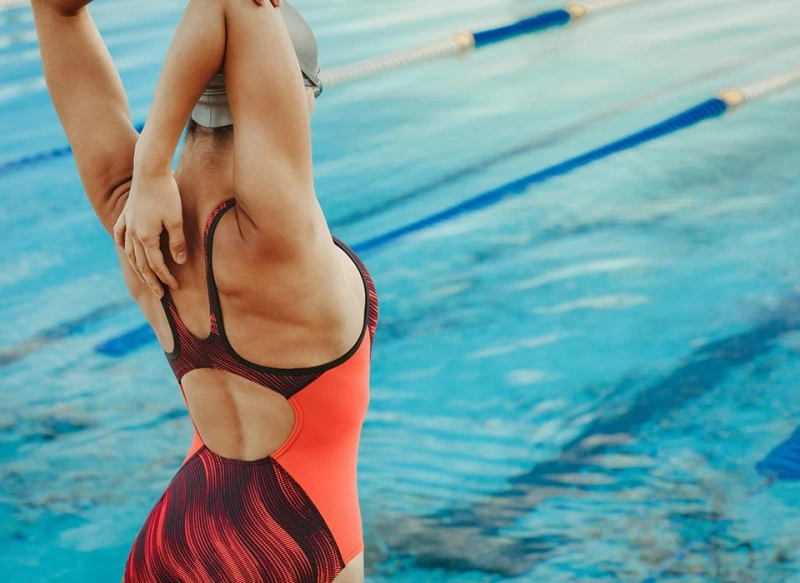There are certain sports, such as swimming, that place high demands on the athlete in terms of time and training load. On occasion, such levels of demand generate considerable stress on the joint and muscle structures of the shoulder. For this reason, certain musculoskeletal pathologies appear, such as the shoulder, which represents more than half of the injuries among swimmers. Followed by knee, ankle and lower back injuries. This shoulder injury in swimmers is better known as a "swimmer's shoulder injury."
The term swimmer's shoulder is due to subacromial impingement syndrome, and is associated with variable functional limitation in the athlete. This type of injury is highly related to the practice of front crawl or freestyle (80%), followed by the butterfly style and backstroke.
Causes of swimmer's shoulder
Training frequency. A swimming athlete can swim between 10,000 and 14,000 m a day. This equates to 2,500 continuous movements of the shoulder joint per day. As a consequence, continuous movement generates stress on the joint, leading to repetitive microtrauma shoulder injury.
Laxity and joint instability of the shoulder. The shoulder joint is unstable due to its anatomical characteristics. The more mobility, the greater instability. Clinically, most swimmers have increased translation and joint laxity.
Biomechanical characteristics of swimming. This is because most of the propulsive force in swimming is generated by the shoulders.
In addition to these causes mentioned, there are other factors that affect the development of swimmer's shoulder injury:
Rotator cuff fatigue due to scapular dysfunction: If the scapula is unbalanced, it causes the rotator cuff to not work properly and can become inflamed, causing subacromial tendinitis.Muscular imbalance of strength and flexibility in the shoulder muscles and scapula stabilizers.Muscle fatigue associated with sudden increases in training.Training with hand paddles, as it increases resistance to water.Frequency of strengthening exercises with excessive loads.Inadequate stretching techniques (mainly overstretching).What kind of treatment does swimmer's shoulder have?
At Ashutosh Hospital we know that athletes cannot stand still, which is why our treatments are based on recovering from injuries without losing physical condition, muscle tone and weight control. To do this, we apply active treatments that allow, a posteriori, to return to regular sports practice as soon as possible and in the best conditions.
The diagnosis of sports injuries is generally based on the history and clinical examination. The treatment steps are:
Reduction of Inflammation: Rest for a short period, anti-inflammatory therapy, anesthetic blocks, physical therapy modalities (cryotherapy, iontophoresis).
Increased flexibility: Through stretching with appropriate techniques.Strengthening: Aimed at achieving an adequate muscular balance between the rotator cuff and the stabilizers of the scapula. Emphasis should be placed on strengthening 2 main areas: Depressors of the humeral head (subscapularis, infraspinatus and teres minor) and Stabilizers of the scapula (upper and lower trapezius, serratus anterior and rhomboids)After a swimmer's shoulder injury, the athlete's return to training will be gradual and his progression will depend on tolerance and absence of pain. To do this, it must be controlled at all times by a traumatologist specializing in this type of sports injury.WHAT YOU NEED TO KNOW ABOUT ANTERIOR CRUCIATE LIGAMENT RUPTURE
0



